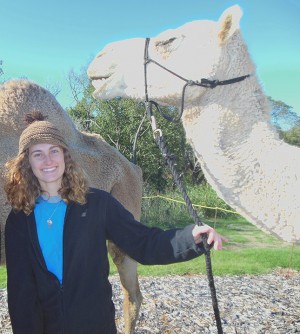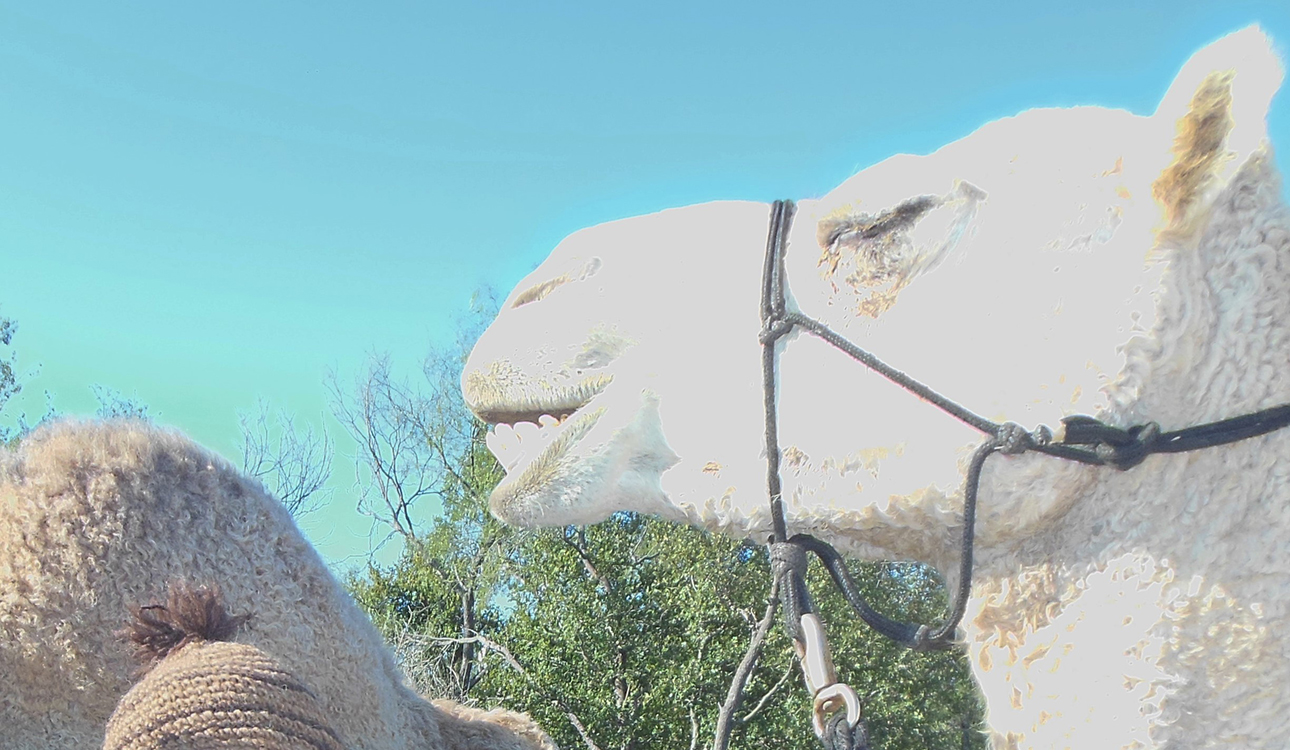
Brittney Horner | Reporter
Reporter
Hundreds of bones may be under your feet yet to be discovered because Waco’s fossil history runs deep.
The Waco Mammoth Site celebrated National Fossil Day by hosting the Fall Fossil Festival.
The festival took place on Saturday although National Fossil Day was on Oct. 16. National Fossil Day promotes public awareness of fossils and a greater appreciation of their scientific and educational values, according to National Park Service website. The festival featured pumpkin painting, live camels, an excavation station and tours of the site every 30 minutes.
Tawny Waterman, a freshman at McLennan Community College, volunteered to monitor the interactive excavation station for extra credit in her physical geology course.
“First, a course in archaeology is offered, instructing how to dig,” she said. “Then people can search for replica fossils.”
Before digging, people toured the mammoth site, which costs $6 with a Baylor ID or $7 without.
The tour teaches the history of the site, starting in 1978, when Paul Barron and Eddie Bufkin stumbled upon a large bone near the Bosque River. The bone was taken to the Strecker Museum at Baylor and a team was organized to excavate the area. Since then, the remains of Columbian mammoths, a camel and a saber-tooth cat have been discovered.
Hal Simmons, a tour guide, said the mammoths found were about 14 feet tall at the shoulders and about 20,000 pounds.
“They would eat about 300 to 700 pounds of grass a day,” he said.
Valley Mills junior Vanessa Baum, an anthropology major, showcased two live camels, Irenie and Ibrahim, at the festival.
Camel bones were found very close to mammoth bones, and those who studied the remains claim the species coexisted peacefully.
“Camels and mammoths presented no danger to each other, and they even helped each other stay safe,” Simmons said.
The live camels were from Texas Camel Corps in Valley Mills. Vanessa Baum said her dad, owner Doug Baum, is very passionate about camels and their history in America.
“Our main focus is on education,” she said.
Vanessa said groups can pet or ride the camels, but entertainment is not Texas Camel Corps’ goal.
“It makes us feel like carnies,” she said. “We don’t do it for the business. We focus more on education.”
The festival workers all shared the goal of education.
Round Rock senior Eva Abernathy, a tour guide at the mammoth site, said she enjoys teaching people history.
Abernathy is a forensic anthropology major at Baylor and she said she wishes more students would visit the site.
“Baylor is a part of this site,” she said “It is awesome and more people should support it.”
Abernathy and Simmons both said in order to do more digging, an on-site lab would need to be built, which would require more funding.
“We are trying to make this a national park,” Abernathy said.
There is a petition at www.whitehouse.gov, asking President Barack Obama to make the Waco Mammoth Site a national monument. The recent government shutdown extended the deadline of the petition to Oct. 28.
The petition needs 100,000 signatures to be considered for executive order. As of the time of publication, the petition had 717 signatures. To get involved, visit waco-texas.com.






